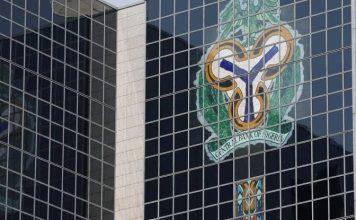- Amidst a new increase in public debt, financial and public affairs analysts are worried that Nigeria’s debt service ratio could become unmanageable, especially as more borrowing starts to overshadow private sector funding.
Nigeria’s total public debt stock rose by 10.73 percent, quarter-on-quarter (QoQ), to N97.34 trillion in the fourth quarter of 2023 (Q4’23) from N87.91 trillion in the third quarter of 2023 (Q3’23), the National Bureau of Statistics (NBS) reported yesterday.
This figure also represents a year-on-year (YoY) increase of 10.46 percent over the N46.25 trillion recorded in the corresponding period of 2022 (Q4’22).
David Adonri, Analyst/Executive Vice Chairman at Highcap Securities Limited, commented, “Against expert advice, public borrowing continues unabated. Increasing public borrowing expands fiscal policy, which conflicts with the Central Bank of Nigeria’s contractionary monetary policy aimed at curbing inflation.
Without a significant increase in public revenue, Nigeria is heading towards a situation where the debt service ratio may exceed 100%. Excessive public borrowing, coupled with tight monetary policy, is already raising the cost of credit and diverting funds away from production.
External borrowing is riskier than domestic debt, which can be managed by the government’s sovereign authority. Any sovereign default on external debt would have severe consequences.
Due to Nigeria’s high sovereign risk, external debts carry high interest rates with excessive risk premiums. Instead of relying on borrowing to boost foreign exchange supply and import dependence, Nigerians should focus on using domestic resources to make the economy self-reliant.
An economy reliant on foreign exchange for survival is not sustainable.”
Also speaking on the development, Clifford Egbomeade, Communications/Economic analyst, added, “The increase in Nigeria’s public debt stock to N97.34 trillion in the fourth quarter of 2023, as reported by the Nigeria Bureau of Statistics (NBS), carries significant economic implications for the country. Firstly, such a substantial rise in public debt may heighten concerns about debt sustainability, particularly if the borrowed funds are not effectively utilized to stimulate economic growth and development. With a higher debt burden, there could be increased pressure on government finances, potentially leading to reduced spending on critical sectors such as infrastructure, healthcare, and education. Furthermore, the composition of the debt, with a significant portion being domestic, raises concerns about its impact on interest rates and inflation. Increased government borrowing from domestic sources can crowd out private sector investment, leading to higher interest rates and reduced access to credit for businesses. This could stifle economic growth and hinder efforts to diversify the economy and create jobs.
“Regarding the question of whether further external borrowing is advisable compared to internal borrowing to boost foreign exchange reserves, several factors need consideration. External borrowing may provide immediate access to foreign currency, helping to bolster foreign exchange reserves and stabilize the local currencies. However, it also exposes the country to exchange rate risk and potential fluctuations in global financial markets. Additionally, reliance on external borrowing increases the country’s vulnerability to external shocks and may impose conditions from lenders that could affect domestic policy flexibility.
In light of these considerations, a balanced approach that considers both domestic and external borrowing options, along with prudent debt management practices, is essential. It is crucial to ensure that borrowed funds are invested in productive sectors of the economy to generate returns that can service the debt and contribute to sustainable economic growth.
